Reidar Aulie (1904 - 1977)
In the 1920s and ‘30s many Norwegian artists joined the labour movement. Reidar Aulie actively participated in this struggle to improve social and working conditions, and his political involvement affected his artistic practice. He developed a narrative pictorial language and often depicted social injustice. Aulie was an intellectual artist, well-oriented in the history of art and literature, and he enjoyed traveling. After receiving impulses from artistic directions such as German Neue Sachlichkeit (New Objectivity) and Soviet Social Realism, he eventually developed a more naïve pictorial expression involving a marked use of contrasting colours.
"The first oil picture that came into my collection was Building a Community Center, by Reidar Aulie. I remember it was acquired a few years before the war broke out in 1940. It was not that expensive at the time and people were not very keen on art, so it was not easy for the artists to sell. Aulie and I got along well." (Halvdan Hafsten)
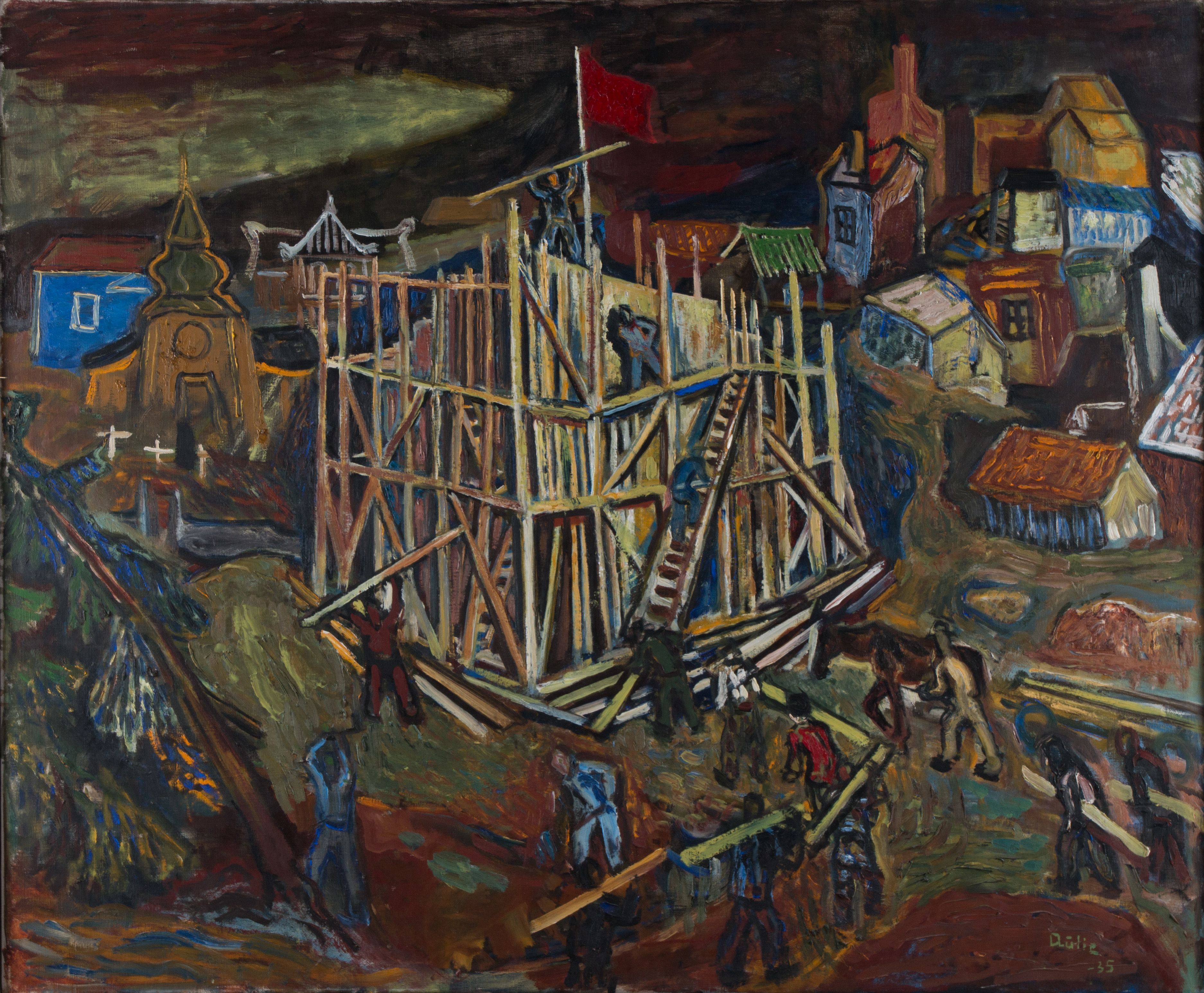
Building a Community Centre, 1935. Purchased from the artist.
‘I painted “Building a Community Centre” because I believe the labour movement and socialism are the only means to get people to unite and work together to increase the level of humanity and promote culture. Back when I painted the picture everything was different than it is now. It was easier (or at least it seemed easier) to be a socialist. I trusted the Soviet Union and was convinced that the labour movement would triumph over fascism just based on the force of nature, and that it would be a basis for culture. Simple and clear thoughts are the only things that can be built on further. Complicated and refined ideas are some sort of by-product of thinking, and they don’t show the way forward.’ (Written by the artist at Hafsten’s request)
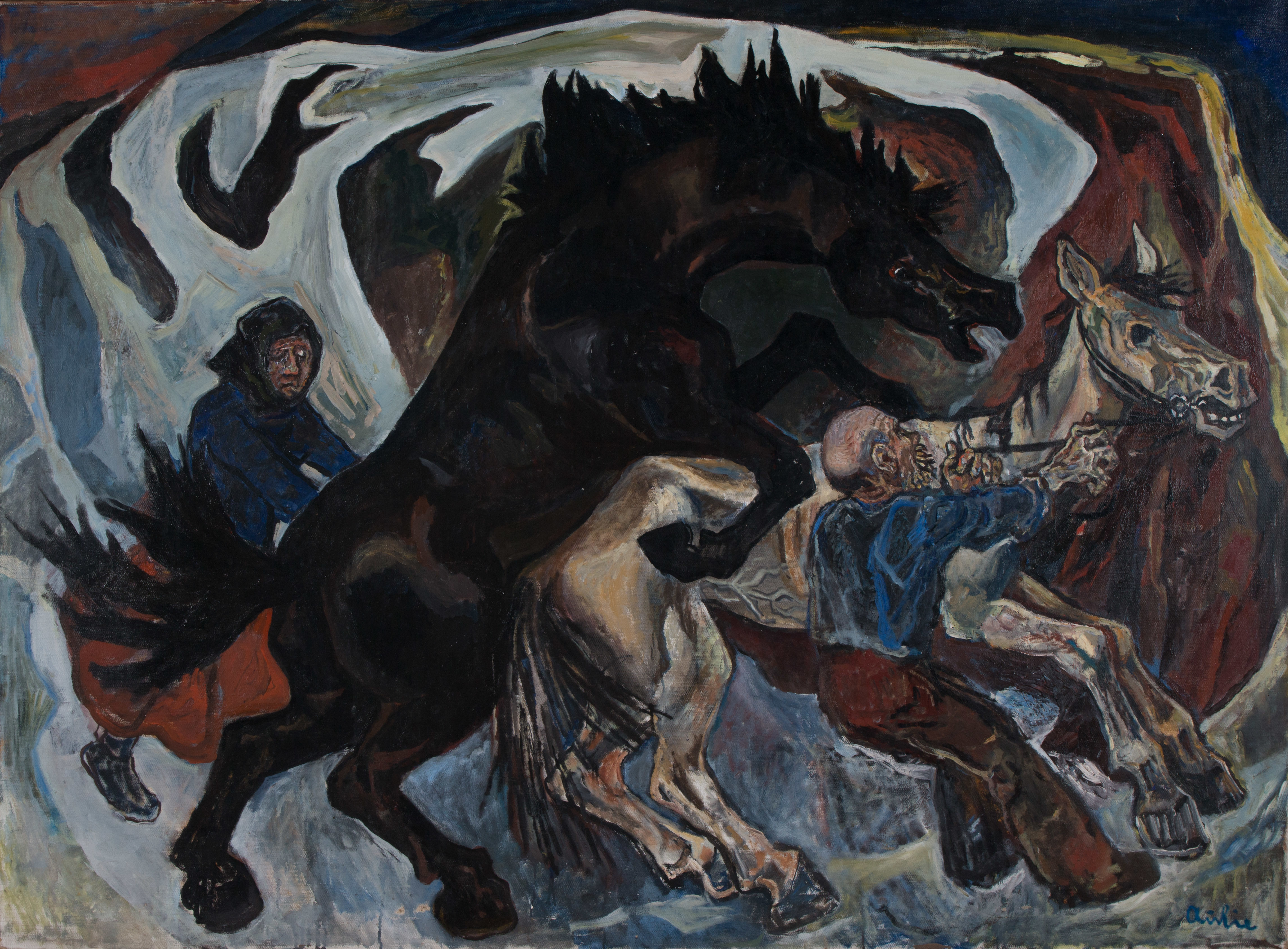
The Stallion, 1937. Purchased from the artist
It’s not easy to account for why one has painted a picture and how various experiences and mental states contribute to forming the idea for a picture. For me, it very often happens that a picture changes character in the creation process and becomes something different than I initially thought. It’s been several years since I painted “The Stallion”, and I may have forgotten a few things. But I remember that when I painted it, I was engrossed in reading Hans D. Kinck. And I think it was “Sneskavlen brast” (“The Avalanche Broke”) that incited me to paint “The Stallion”. I have tried to depict the wild Norwegian nature and people’s struggle in the face of harsh and rugged conditions. The urge to use violence in the expression, which I think the picture probably bears witness of, has of course purely human causes that are impossible to explain.’ (Aulie)
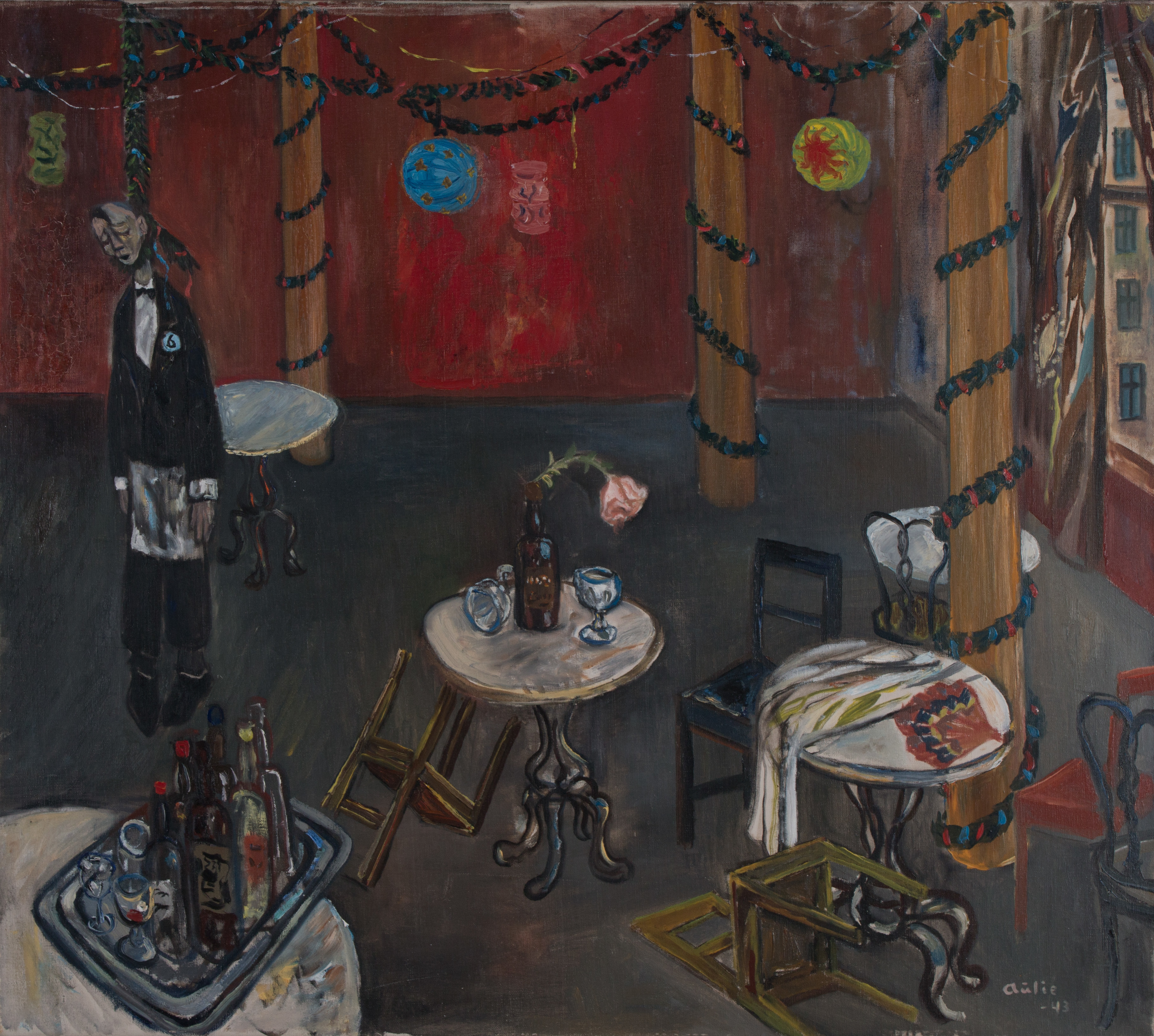
Gustav, 1943. Purchased from the artist
‘I painted “Gustav” during the war. In the summer of 1943, we were able to borrow an old crofter’s farm on a larger estate in Eidsberg, where Kari’s cousin is the wife. It’s called Nedre Thue. Up to that time we had stayed at home in Oslo every summer since the occupation started. Here at this little farm, I finally, for the first time, felt the freedom of living in a place where the gestapo couldn’t find me. It was a happy summer. Not just because we felt relatively safe, but also because so much happened that summer, not least in Italy, which indicated to us that Fascism and Nazism would have their downfall. Just before we had to return to Oslo, I was working on a drawing of a bacchanal, in which an old musician is pounding on a piano while people dance, drink, love, fight and throw up into the piano. Then we returned to Oslo. I had this picture clearly in my mind; of the waiter, Gustav, who hangs himself in the flower garland after the party has ended. I painted it as soon as I got back to my studio. It’s impossible for me to give a more precise explanation of the picture.’ (Aulie)
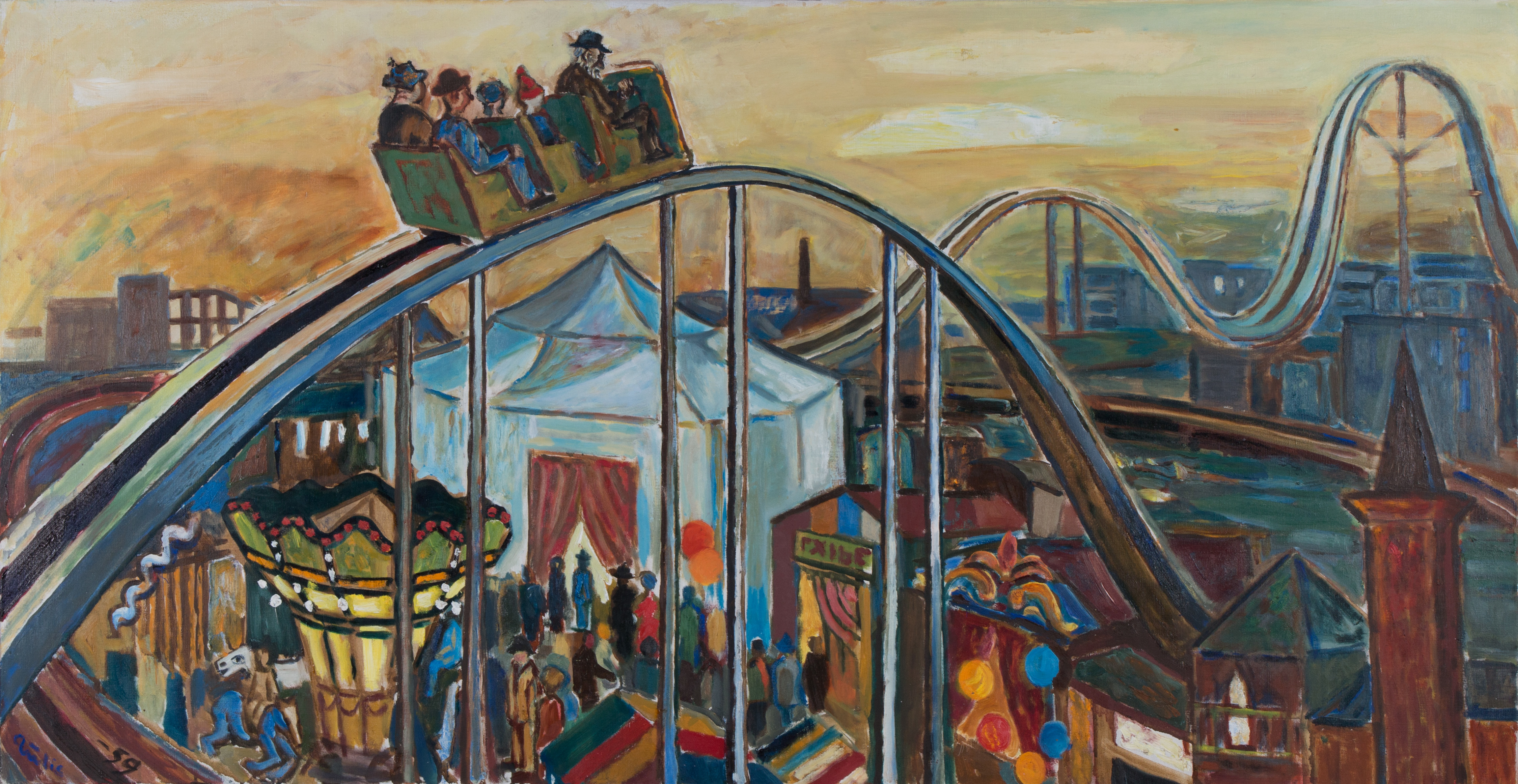
The Roller Coaster, 1959. Purchased from the artist
‘I’ve always been interested in circuses and open-air markets. All the life that unfolds here fascinates me. People’s hankering for experiences that go beyond the mundane.
I can’t actually remember why I painted “Roller Coaster”, but I think it started with once again wanting to paint the circus tent, and that I wanted some people up in the sky. Thus came the roller coaster, with people at the top of an incline, just before they plunge toward the ground. Then came the development of arches rising and falling as they recede into the picture’s background, from the noisy life in the market and toward the infinity of loneliness. A development of the colours, from loud to quiet. In the lines, a compositional interplay of arches and verticals.I also think there’s something in the picture that can’t directly be explained. Something having to do with life and death.’ (Aulie)
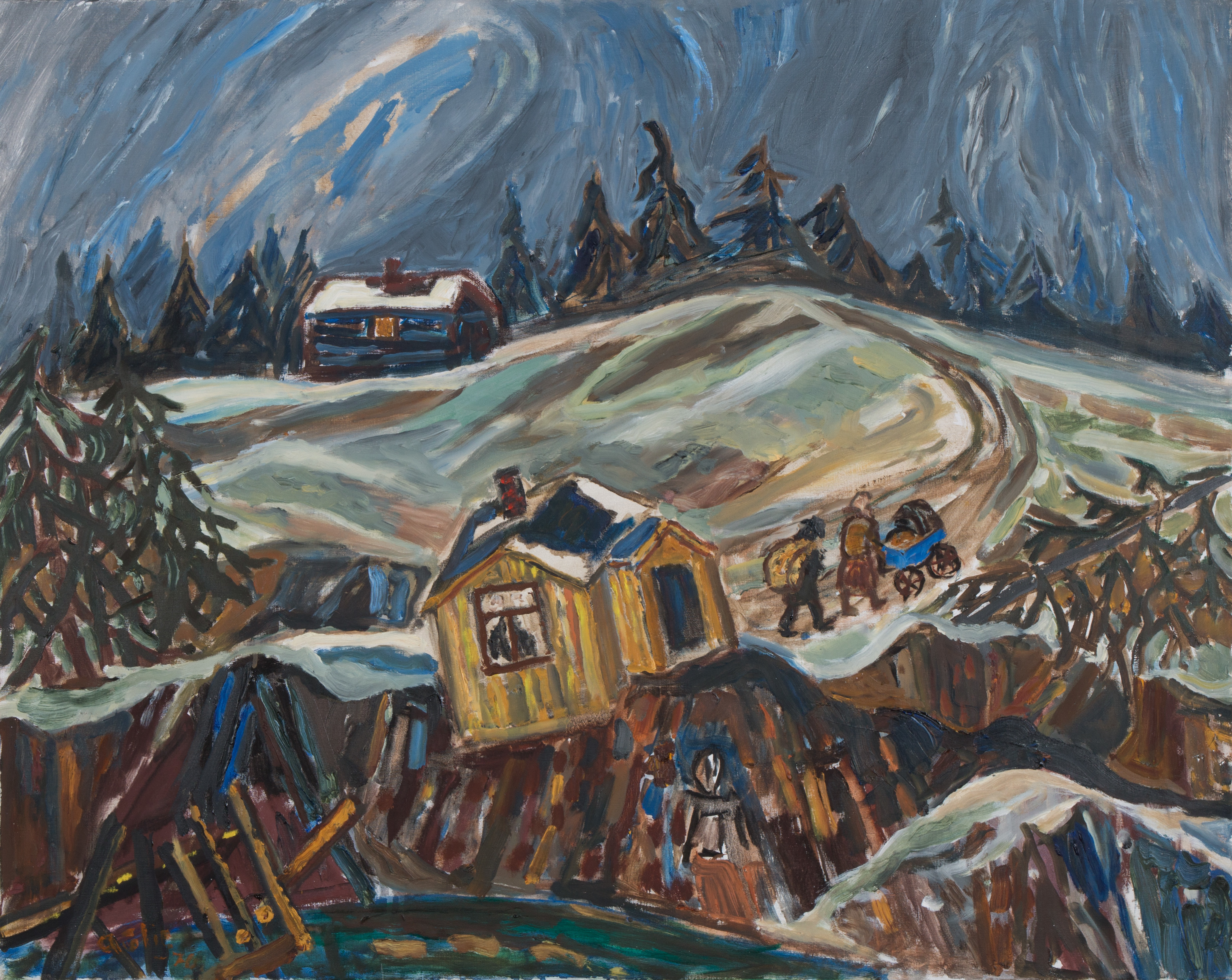
The Scene of the Landslide, 1970. Purchased from the artist
‘It often happens in our country that landslides destroy farms and land. These events don’t have world-wide impact, but for those who are affected, a landslide is a gruesome tragedy. The large accidents in the world are on such a scale that it’s impossible to comprehend them. I don’t think they can be depicted in painting. I’ve painted a home, maybe it was idyllic, that now teeters on the edge of a cliff. The depiction of this local disaster symbolises the situation in which much of humanity finds itself in. The composition is crooked, just like the subject.
I can say that the picture is a fragment of a much, much larger project.’ (Aulie)
Article and archive selection
Hanne Beate Ueland, director Stavanger art museum
Photos
Building a community centre: Terje Tveit/AmS
Others: Stavanger art museum